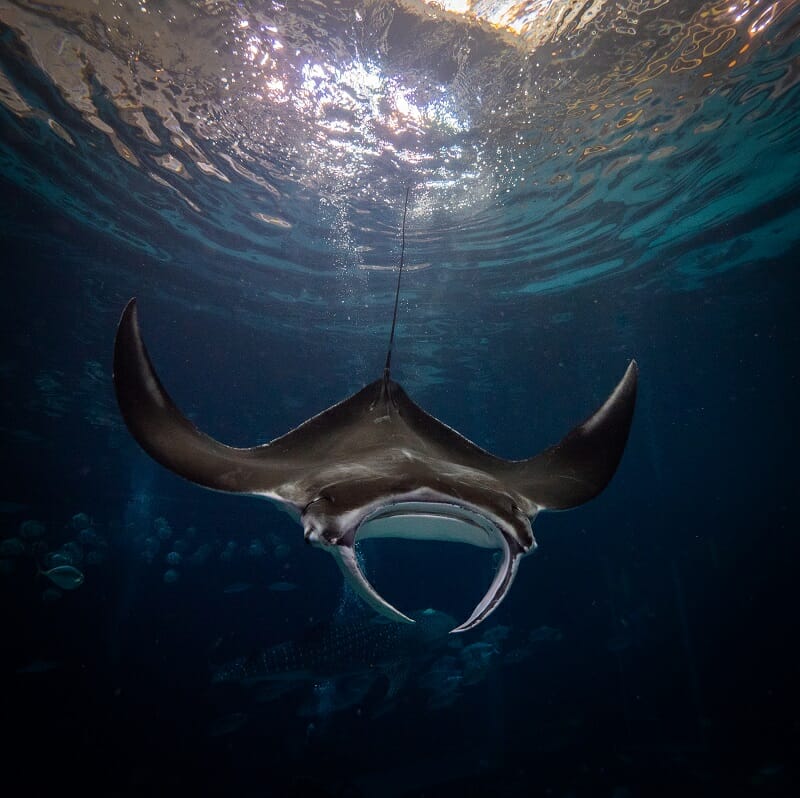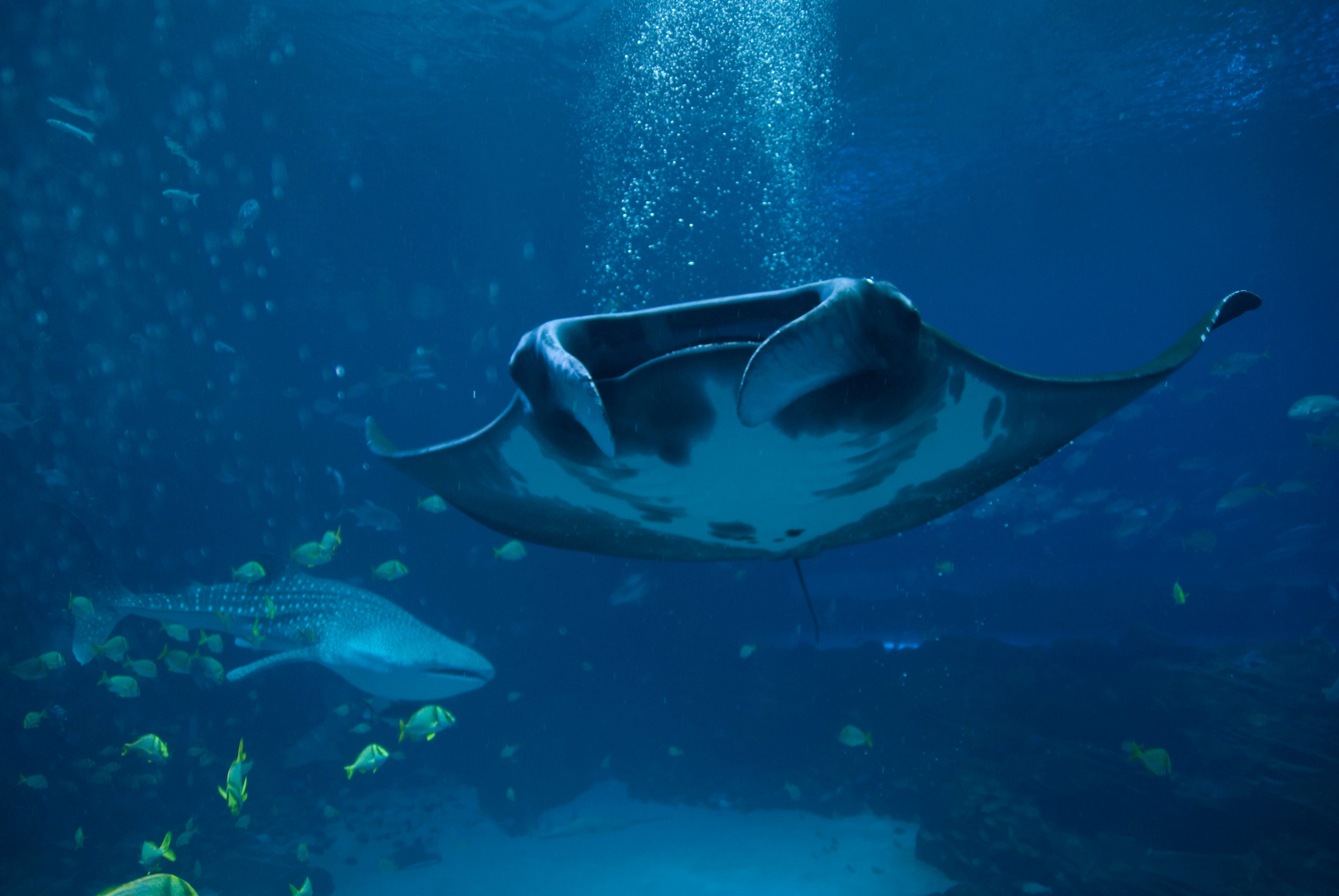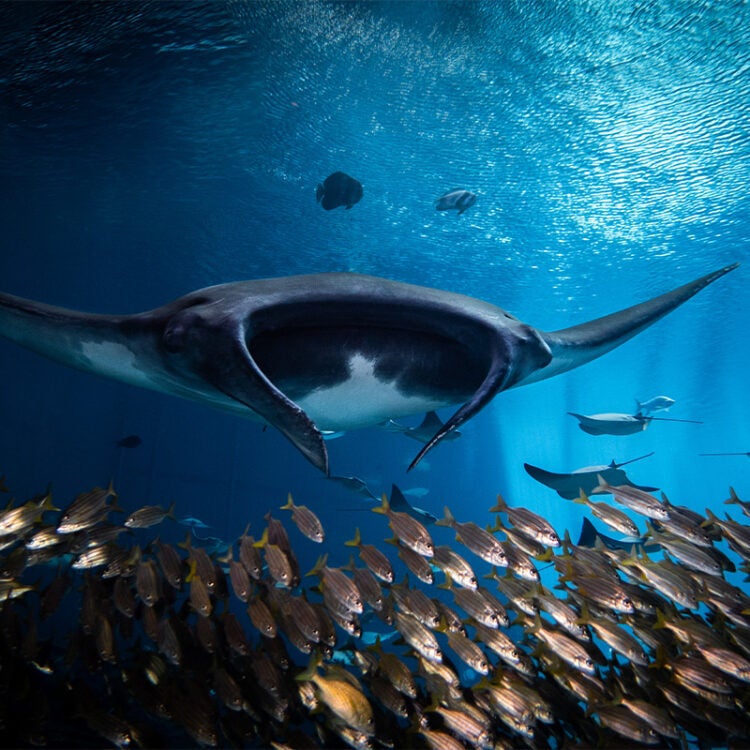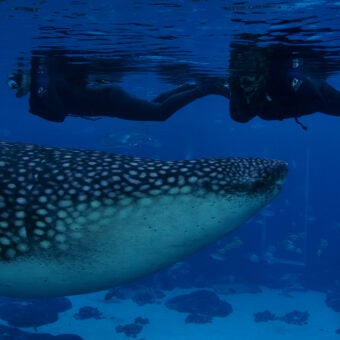-
Size
20 feet (6 m) -
Diet
Plankton and small fish -
Range
Western Atlantic, Gulf of Mexico -
Habitat
Reefs, atolls, island groups and the continental shelf
Physical Characteristics
- Has a broad head with an enormous wide mouth flanked by two broad, flexible, fleshy lobes (cephalic fins). These lobes are usually kept rolled and pointed forward except when the manta is feeding; at this time the cephalic lobes will be open and extended.
- Sometimes called the “devil ray” because when rolled and projected forward, the cephalic lobes have the appearance of horns.
- Reaches weights of up to 3,080 lbs. (1400 kg) can be up to 20 feet (6 m) across.
- This species of manta may show great variation in pattern, but generally can be described as such:
- Dorsal surface is dark in color with lighter shoulder patches. The underside is mostly white, dotted with black or charcoal blotches.
The patterns on the shoulders and underside exhibit many arrangements and can help identify individual animals.
- Dorsal surface is dark in color with lighter shoulder patches. The underside is mostly white, dotted with black or charcoal blotches.
- Tail is whip-like and has a thick round mass at the base, just behind the dorsal fin. This is an identifying feature of this species.
Animal Fun Fact
Manta rays have been spotted jumping out of the water.
Diet / Feeding
Diet
- Primarily a plankton feeder, but also consumes small fish.
- Its two cephalic lobes are unrolled and held at a downward angle to create a funnel guiding prey into its mouth.
Feeding
- Feeds near or at the surface where plankton accumulates, frequently around reefs. The prey that enters the mouth is filtered from the water by the gill rakers (filter plates), located on the internal gill arches, and then swallowed.
- During feeding the manta ray may repeatedly somersault underwater and also occasionally break the surface. It also feeds in a horizontal orientation.
Range / Habitat
Range
- Occurs in warm temperate and tropical waters of the Western Atlantic throughout the Western Caribbean and in some areas of the Gulf of Mexico.
Habitat
- Frequently observed around reefs, atolls, island groups and the continental shelf with consistent upwelling currents.
Reproduction & Growth
- Ovoviviparous, meaning that the embryo develops within eggs retained in the mother’s uterus. The embryo is nourished by its egg’s small yolk, but also receives nourishment from the mother through small projections in the uterus called “villi” or trophonemata.
- Females give birth to one or two live young. The pups are born with their wings folded around their body to allow easier passage through the birth canal.
Conservation Status
- “Endangered” on the IUCN Red List.
- CITES Appendix 2.
Additional Information
- Manta rays have been observed jumping from the water, mainly in spring and autumn. This seems to be associated with mating displays, although it may also be social behavior or actions related to dislodging skin parasites.
- “Manta ray” comes from the Latin mantum, meaning cloak or veil.
- Fishing pressure and by-catch in drift and set nets are depleting local populations.
- It is harpooned and harvested in some areas for its meat, skin and oil-rich liver.
- The branchial arches of the gills are dried and used in Asian medicine, contributing to additional harvesting.
- The only natural enemies of the manta ray are large sharks and humans.
- This manta ray has 18 rows of teeth on the center of the lower jaw.
Sources
Unique Gifts from Georgia Aquarium
Bring the memories home with you! Stop by our gift shop for all your manta ray gifts or shop online here.








